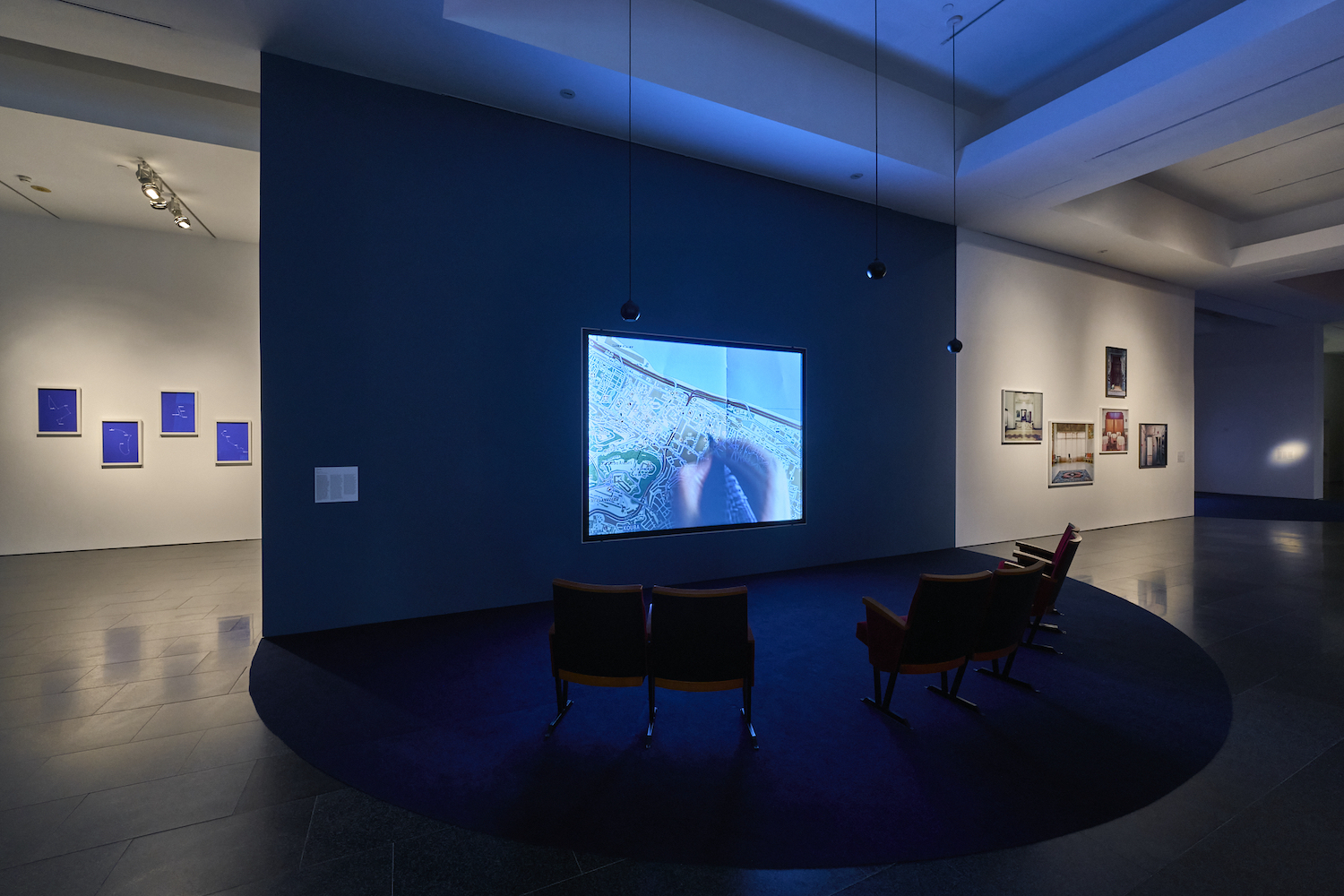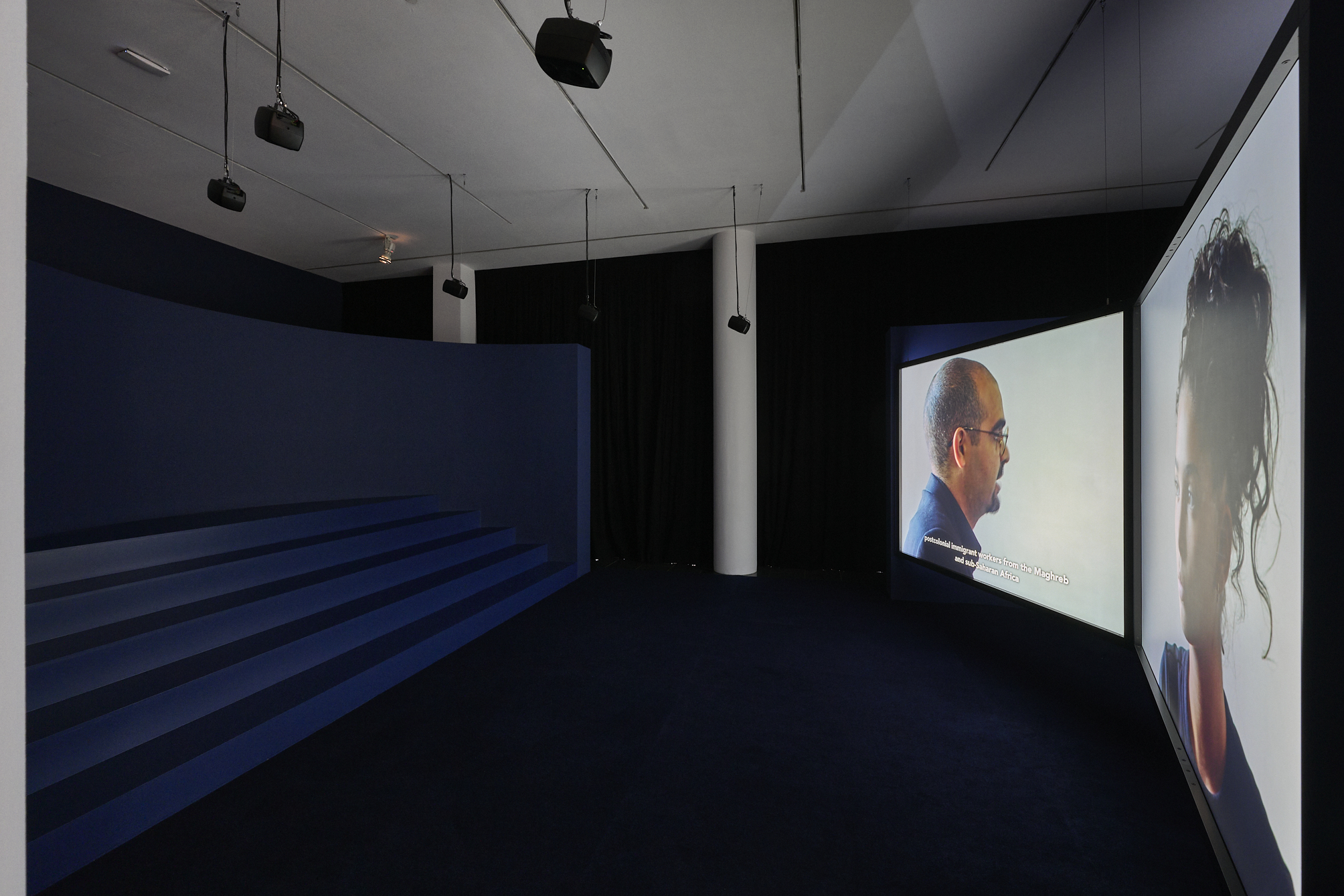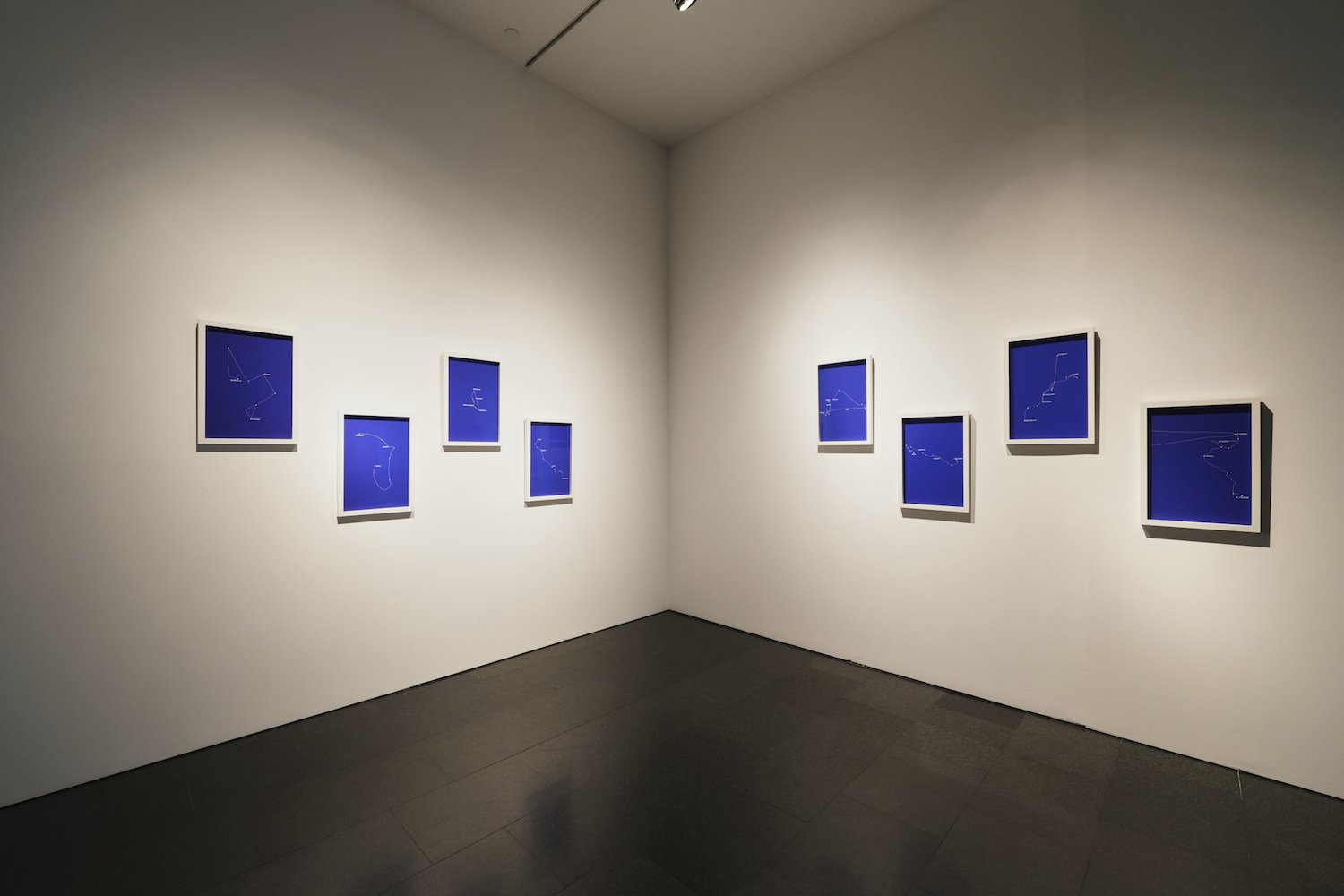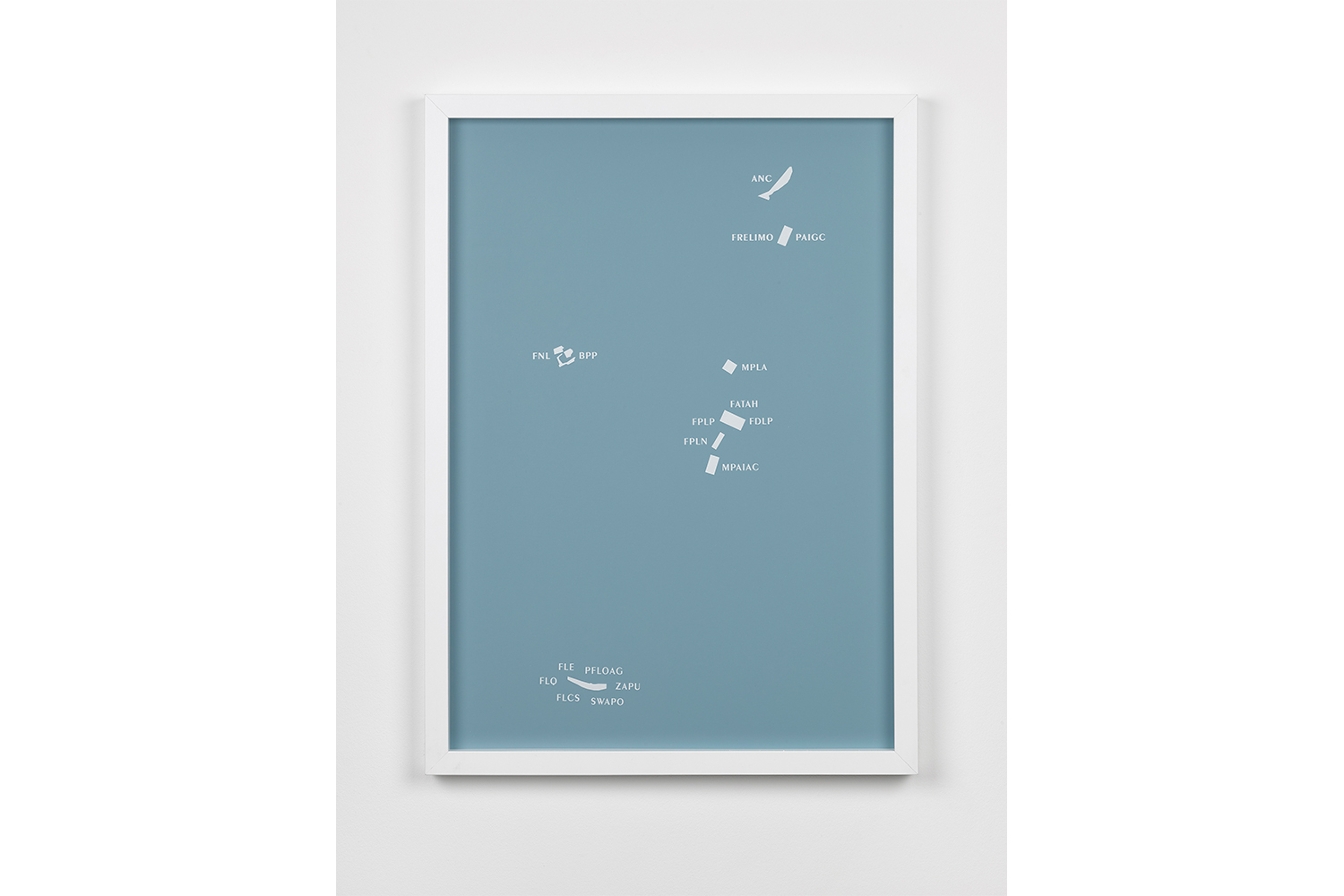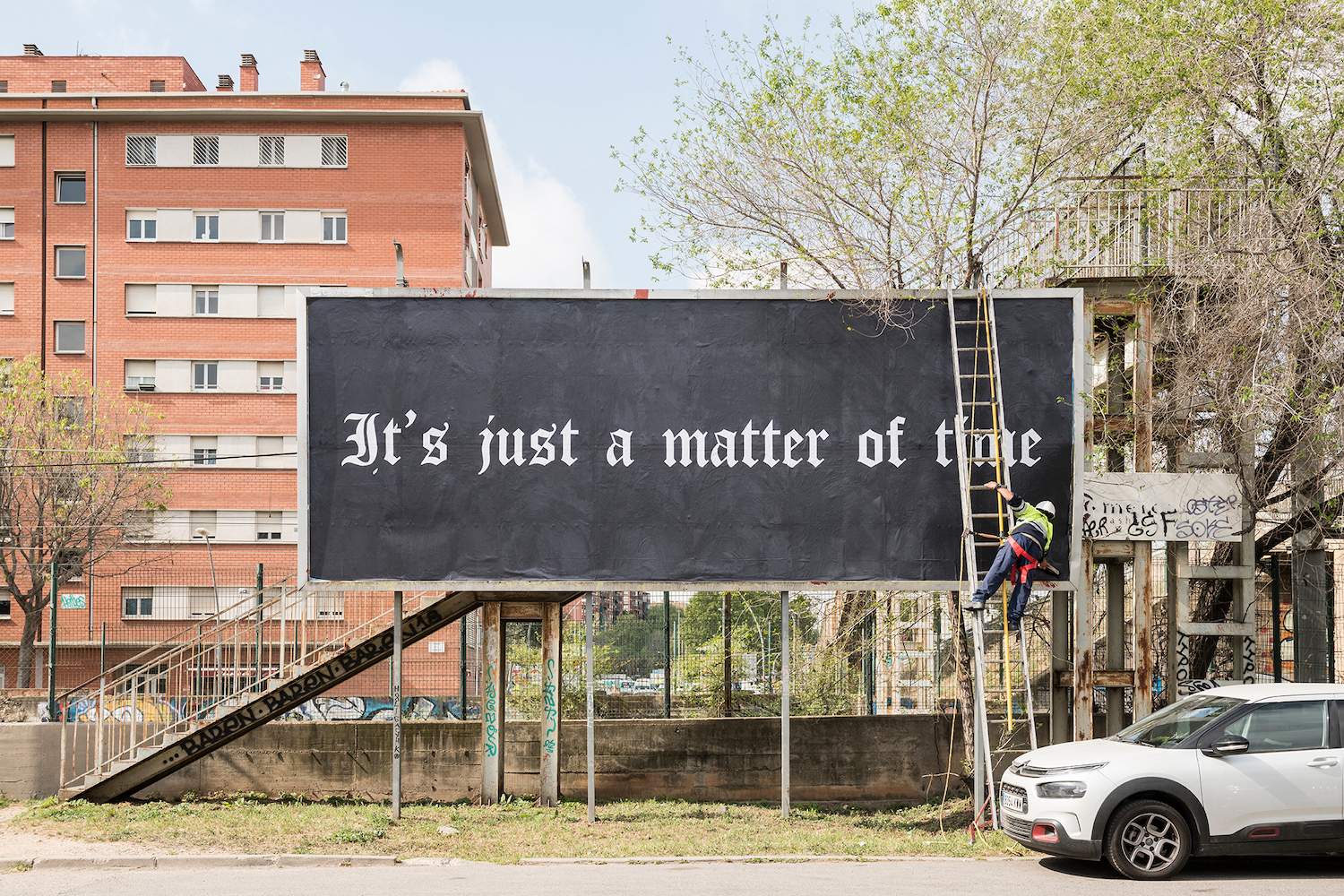What fascinates me is the power of speech, the power of storytelling, and eventually speech as a form of resistance, in all its dialectal forms.
– Bouchra Khalili
‘Who is a witness to history?’ is one of the central questions that haunts Bouchra Khalili’s interdisciplinary practice. A way of working that explores modes of witnessing suppressed or undocumented history, interweaving first-person accounts, popular poetics and communal narratives. To approach her work, we must first understand how language and speech, and their relationship with oral traditions of storytelling, are the key tools for the production of postcolonial history.
The exhibition’s title refers to two essential aspects of Khalili’s work. On the one hand, she recovers the notion of Al-Halqa, literally ‘the circle’, ‘the assembly’, a centuries-old tradition of storytelling in public spaces in Morocco, seen here as a metaphor for the search for political visibility characteristic of the protagonists of The Circle, actors and agents of their own history. The piece is the culmination of a research project undertaken by Khalili over the last ten years.
At the same time, the exhibition invites viewers to become witnesses to such encounters and struggles through the superposition of narratives in Khalili’s work, an extraordinarily complex amalgam of multiple layers, genres and languages transmitting the memory of previously silenced, unacknowledged or undocumented communities.
“Between Circles and Constellations” brings together projects from the last decade of Khalili’s oeuvre, including film, video, installation, photography, objects, and prints. Bookended by The Tempest Society (2017) and The Circle (2023), two works that take inspiration from the legacy of the Movement of Arab Workers (MTA) in France in the 1970s, and their theatre groups. The exhibition itself is conceived as a constellation in which works are interconnected through their shared reflections on belonging and political agency, as well as through a compilation of key figures from history and postcolonial archives, who appear and reappear in the artist’s works as haunting ghosts.



